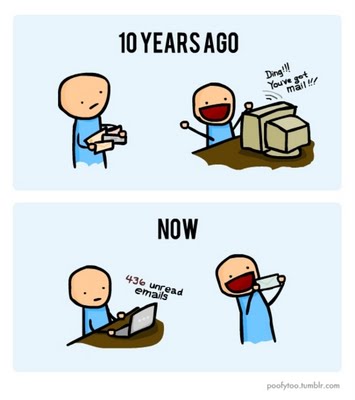
Sending text messages electronically could be said to date back to the Morse code telegraph of the mid 1800s; and the 1939 New York World's Fair, where IBM sent a letter of congratulations from San Francisco to New York on an IBM radio-type, calling it a high-speed substitute for mail service in the world of tomorrow.[21] Teleprinters were used in Germany during World War II[22], and use spread until the late 1960s when there was a worldwide Telex network. Additionally, there was the similar but incompatible American TWX, which remained important until the late 1980s.
Spamming and Virus

The usefulness of email is being threatened by four phenomena: email bombardment, spamming, phishing, and email worms.
Spamming is unsolicited commercial (or bulk) email. Because of the very low cost of sending email, spammers can send hundreds of millions of email messages each day over an inexpensive Internet connection. Hundreds of active spammers sending this volume of mail results in information overload for many computer users who receive voluminous unsolicited email each day.[64][65]
Email worms use email as a way of replicating themselves into vulnerable computers. Although the first email worm affected UNIX computers, the problem is most common today on the more popular Microsoft Windows operating system.
The combination of spam and worm programs results in users receiving a constant drizzle of junk email, which reduces the usefulness of email as a practical tool.
A number of anti-spam techniques mitigate the impact of spam. In the United States, U.S. Congress has also passed a law, the Can Spam Act of 2003, attempting to regulate such email. Australia also has very strict spam laws restricting the sending of spam from an Australian ISP,[66] but its impact has been minimal since most spam comes from regimes that seem reluctant to regulate the sending of spam.[citation needed]

